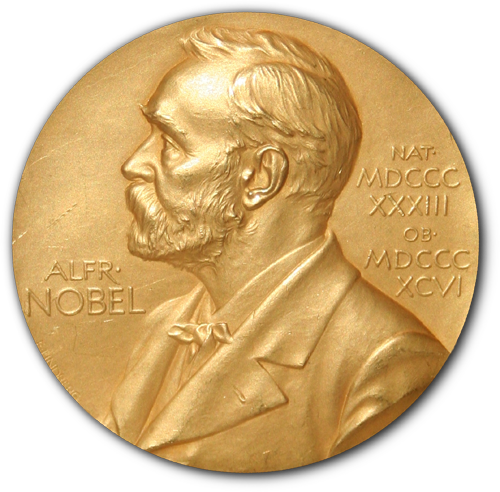Construction of carbon-carbon bond got Noble Prize

Scientists first isolated the substance discodermolide from a sponge living in the Caribbean Sea. Subsequently, they have re-created the substance in test tubes. In one of the critical steps of that procedure, they used Negishi’s variant of the palladium-catalyzed cross-coupling reaction. Discodermolide attacks cancer cells in the same manner as Taxol – one of the world’s most frequently used cancer drugs.
A tool in the search for new medicine…
As is evident from the introductory tale about the marine sponge, the palladium-catalyzed cross coupling is an important tool in the search for new drugs. Today, scientists around the world use the oceans as a large pharmacy. They have isolated thousands of substances from organisms living in the sea, and these substances have inspired further scientific progress. Besides discodermolide, the palladium-catalyzed cross coupling has also helped chemists to artificially synthesize diazonamide A, a substance originating in a Philippine ascidian. In laboratory experiments, diazonamide A has proven effective against colon cancer cells. Another example is dragmacidin F, which has been isolated from a sponge living off the coast of Italy. Preliminary laboratory testing shows that dragmacidin F affects both the herpes virus and HIV.
Nobel Prize in Chemistry 2010 is awarded to Richard F. Heck, Ei-ichi Negishi and Akira Suzuki for the development of palladium-catalyzed cross coupling. The newly discovered synthetic methods will be very much useful to construct some of the important molecules mentioned above, which are useful for many aspects.
How to synthesize above molecules…
Carbon-based (organic) chemistry is the basis of life and is responsible for numerous fascinating natural phenomena: colour in flowers, snake poison and bacteria killing substances such as penicillin. Organic chemistry has allowed man to build on nature’s chemistry; making use of carbon’s ability to provide a stable skeleton for functional molecules. This has given mankind new medicines and revolutionary materials such as plastics. In order to create these complex chemicals, chemists need to be able to join carbon atoms together. However, carbon is stable and carbon atoms do not easily react with one another. The first methods used by chemists to bind carbon atoms together were therefore based upon various techniques for rendering carbon more reactive. Such methods worked when creating simple molecules, but when synthesizing more complex molecules chemists ended up with too many unwanted by-products in their test tubes.
Molecular constructions…
The Grignard method of coupling carbon atoms has been enormously important in chemistry. But when it comes to creating large and complex molecules, the method has its limitations. The carbon atom in the unstable Grignard reagent does not behave predictably. When the reagent has several different carbon atoms to react with, too many unwanted by-products are created. The palladium-catalyzed cross-coupling reaction solves this problem and provides precision in the process. When the carbon atoms meet on a palladium atom, chemists do not need to activate the carbon atom to the same extent. This entails fewer by-products and a more efficient reaction.
Instead of the Grignard reagent, Richard Heck began to use chemical compounds called olefins. In an olefin, the carbon atom is naturally slightly activated and when it binds to the palladium atom it becomes even more likely to react with another carbon atom.
In 1977, Ei-ichi Negishi developed a variant of the Grignard reagent when he substituted magnesium for zinc. The carbon becomes less reactive when using zinc, but the zinc atom transfers the carbon atom to the palladium atom. When the carbon atom subsequently meets another carbon atom on the palladium atom, they are then prone to a couple.
Two years later, Akira Suzuki used the element boron. It is the mildest activator so far and is even less toxic than zinc, which is an advantage when it comes to large-scale applications. For instance, Suzuki’s reaction is used in the commercial synthesis (thousands of tons) of a substance that protects agricultural crops from fungi.
Today the Heck reaction, Negishi reaction and Suzuki reaction are of considerable importance to chemists.
Last ten years noble prize winners in chemistry…
|
Year |
Winners of the Noble prize |
Research topic |
|
2010 |
1)RICHARD F. HECK, 2)EI-ICHI NEGISHI, 3)AKIRA SUZUKI |
Palladium-catalyzed cross couplings in organic synthesis. |
|
2009 |
1)VENKATRAMAN 2)RAMAKRISHNAN, 3)THOMAS A. STEITZ, 4)ADA E. YONATH |
Studies of the structure and function of the ribosome. |
|
2008 |
1)OSAMU SHIMOMURA, 2)MARTIN CHALFIE, 3)ROGER Y TSIEN |
The discovery and development of the green fluorescent protein, GFP. |
|
2007 |
GERHARD ERTL |
Studies of chemical processes on solid surfaces. |
|
2006 |
ROGER D. KORNBERG |
Studies of the molecular basis of eukaryotic transcription |
|
2005 |
1)YVES CHAUVIN, 2)ROBERT H. GRUBBS, 3)RICHARD R. SCHROCK |
The development of the metathesis method in organic synthesis.
|
|
2004 |
1)AARON CIECHANOVER, 2)AVRAM HERSHKO, 3)IRWIN ROSE |
The discovery of ubiquitin-mediated protein degradation |
|
2003 |
1)PETER AGRE, 2)RODERICK MACKINNON
|
The prize is being awarded for discoveries concerning channels in cell membranes (a)for the discovery of water channels (b)for structural and mechanistic studies of ion channels. |
|
2002 |
1)JOHN B. FENN, 2)KOICHI TANAKA, 3)KURT WÜTHRICH |
The prize is being awarded for the development of methods for identification and structure analyses of biological macromolecules (a) for their development of soft desorption ionization methods for mass spectrometric analyses of biological macromolecules (b) Development of nuclear magnetic resonance spectroscopy for determining the three-dimensional structure of biological macromolecules in solution. |
|
2001 |
1)WILLIAM S. KNOWLES, 2)RYOJINOYORI, 3)K. BARRY SHARPLESS |
a)Work on chiral catalyzed hydrogenation reactions. b)Work on chiral catalyzed oxidation reactions. |
—————————————————–
Dr. Galla. V. Karunakar,
Department of Chemical Sciences,
Tezpur University.
——————————————————


